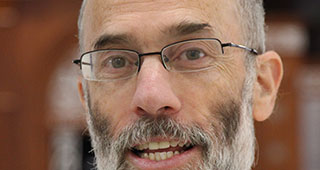Beit Midrash
- Torah Portion and Tanach
- D'varim
- Re'e
Our sedra of Re’eh contains what I call the "elastic clause" of Judaism: "Do what is good & right in the eyes of Hashem." Now, we had this very same directive just two parshiyot ago, in Va’etchanan, so apparently G-d & Moshe felt that it needed to be repeated & reinforced.
But these words, lovely as they may be, are oblique. What, after all, is "good," & what is "right?" Any 10 people will give you widely-varying interpretations, because everyone has an opinion of what constitutes Good & Right. Indeed, I would suggest that is why the Torah is so detailed, with so many Mitzvot in every field, in both the written & the oral law. Add the rabbinic commandments, decrees (g’zeirot) & binding minhagim, & everything is spelled out so that nothing is left to chance.
Now, some commentaries DO try to define this "good and right" clause. Rashi says it means we should try to reach a compromise in any inter-personal dispute & give others the benefit of the doubt rather than assume the worst. The Sifrei says we should conduct ourselves in a manner that meets with the approval of Hashem – who is called "Tov" – as well as our fellow human being. The Ramban interprets this as looking out for the welfare of our neighbor, recognizing that he is no less a creation of the Almighty than you are.
But I think the message goes beyond any one particular action. Hashem is telling us that He can only legislate so much, & list only so many do’s & don’ts. At some point, we’re going to have to gain a general understanding of how we should behave, an inner knowledge that this is the way G-d would want us to act in any given situation.
In Yiddish, we call this seychel, the 5th, unwritten volume of the Shulchan Aruch. It is the manifestation of all of our book learning, the net product of the wisdom & insight we’ve ingested through the years. In short, it is the secret ingredient that turns a man into a mentsch.
Rav Moshe Feinstein, the great 20th century posek, not only had an encyclopedic knowledge of the Torah, he had a unique insight into human nature & behavior that went beyond the words on a page. This allowed him to see "the whole picture" when decided a case. As an example, he ruled twice on the minimum height of a synagogue mechitza; once putting it at 60 inches, another time at half that. Asked how he could contradict himself, he answered: "The questions, you see, were asked by two different groups. One was a non-Orthodox shul turning Orthodox, the other an Orthodox shul becoming more liberal. My answer depends which way the Mechitza is heading; if it’s on the way up, it may start small & eventually grow. But if it’s on the way down, it must stay at its full height!" Saychel.

Insights on Dealing with Societal Crisis
Rabbi Yossef Carmel | Av 23 5781

Parashat Hashavua: “All Creation Will Know” – part III
Rabbi Yossef Carmel | Av 5785

Ma'aser Sheni
Parashat Re'e
Rabbi Eliezer Langer | 5766




















